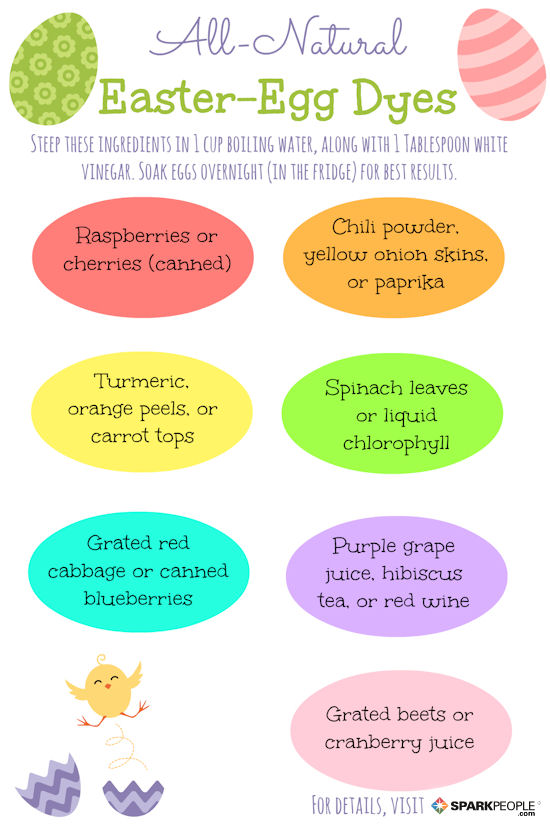|
A symbol of rebirth and renewal, eggs are closely associated with spring and Easter. Dyeing these iconic orbs is a popular spring pastime that yields a beautiful decoration, protein-packed treat. With so many people interested in making their own healthy pantry staples at home, we thought it would be fun to share one of our favorite seasonal D.I.Y. projects: natural dyes for Easter eggs! You'll start with perfect hard-boiled eggs, plus a few ingredients you likely have in your home already. Natural dyes are easy, and you can even create custom colors if you want to get creative! The process is simple: Find ingredients that bleed a strong color when cooked in water. Simmer your ingredient(s) of choice for 20-30 minutes in 1 cup of water per egg you want to dye, then strain out the solids, reserving the liquid, and let cool slightly. Pour the dye liquid into ceramic or glass containers (metal containers might cause a reaction and alter the color), add 1 tablespoon white vinegar to set the dye, and then add hard-boiled eggs to soak. Natural dyes require a longer soak time, so leave eggs in the dye for a few hours or up to overnight (in the refrigerator) for best results. Here are some of our favorite ingredients for natural egg dyeing: Be sure to Pin this graphic for easy reference!  Red: 1/2 cup raspberries or 1/2 cup cherries (canned) Orange: 2 T chili powder, 3-4 yellow onion skins, or 1/4 cup paprika Yellow: 1 T turmeric, 3-4 orange peels, or 1 bunch carrot tops Green: 4 cups spinach leaves, chopped or chlorophyll drops (to achieve desired hue) Blue: 1/4 head red cabbage, grated, or 1/2 cup canned blueberries Purple: 1 cup purple grape juice, 2-3 bags hibiscus tea, or 1 cup red wine Pink: 1 cup grated beets or 2 cups natural (no sugar added) cranberry juice You can have fun and try any number of brightly colored fruits and vegetables. Note that frozen or canned fruit often yields a richer color. Chop, grate, or puree fruits and vegetables for best results. Breaking down the cell walls will ensure a brighter color. After your eggs have achieve the desired hue, drain them and discard the dye. Natural dyes are matte and not as bright as commercial dyes, so you can rub a little oil onto your eggs to make them shinier. Now that you know how to make your own dyed eggs, get creative with your decorations! Have you ever tried making homemade dyes? Will you try? |
Popular EntriesMore From SparkPeople
|















